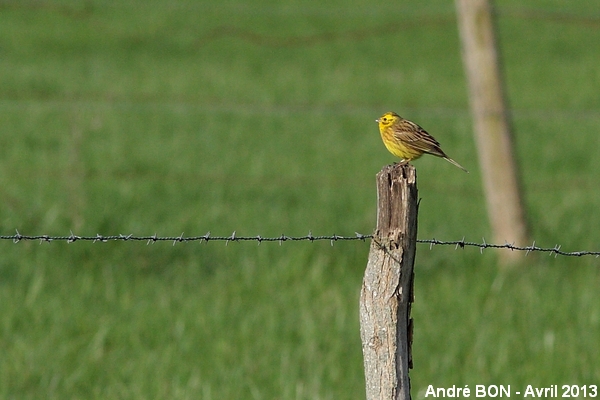
| Yellowhammer (Emberiza citrinella (Linnaeus, 1758)) |

|
|
Scientific name: Emberiza citrinella (Linnaeus, 1758) Common name: Yellowhammer French name: Bruant jaune Order: Passeriformes Family: Emberizidae Size: Body size: 16 to 17 cm; Wingspan: 23 to 29 cm; Weight: 24 to 35 g. Habitat: Woodland edges, hedgerows, bushes, cultivated areas outside the breeding season. Food: Seeds of grasses picked on the ground, but also insects and some other small arthropods in spring. Nesting: The nest is located on the ground under a bush or a tuft of high grasses. Females lay 3 to 4 eggs over a large period which extends from late April to August. Migration: Partially migratory, some northern birds are sedentary. Geographic area: Temperate and northern regions of Europe and Asia, from northern Spain north to the Arctic Circle. Introduced to New Zealand, to Australia, to South America, to South Africa, to the United States and to Canada. |
Yellowhammers have a rather long tail. Males have a yellow head with some dark markings on the cup and on the lateral sides. The upper parts are reddish brown with black streaks, the rump is rufous and the underside of the body is lemon yellow. The outer feathers of the tail are white and well visible in flight. Females are much less yellow-coloured. The cap is streaked. The lateral sides of the head are greenish grey. The chest and the underside of the body are striated with greyish black. |
| [To know more about the Yellowhammer] [Top] |

|
Here is one male observed in the far (this picture is an important crop). It is in its typical nuptial plumage. |